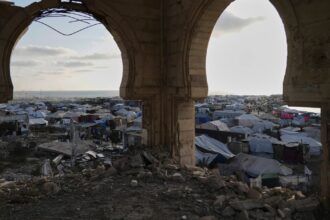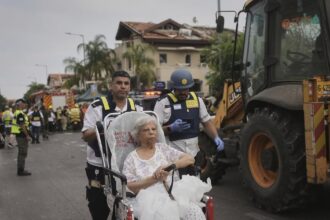In what health officials are calling a “silent emergency,” global childhood vaccination rates have fallen to their lowest levels in over a decade, leaving an estimated 67 million children worldwide vulnerable to entirely preventable diseases. The troubling decline, documented in a comprehensive report released yesterday by the World Health Organization and UNICEF, reveals the fragility of global health infrastructure and the lasting impact of pandemic-era disruptions.
“We’re witnessing the unraveling of decades of progress,” said Dr. Helena Moreau, WHO’s Director of Immunization Programs, during yesterday’s virtual press briefing. “What’s particularly alarming is that these declines aren’t limited to low-income regions – we’re seeing concerning drops across countries at all economic levels.”
The report highlights a stark 7% global decrease in routine childhood immunizations since 2019, with coverage for critical vaccines such as measles, polio, and diphtheria-tetanus-pertussis (DTP) falling below the 90% threshold considered necessary for effective community protection. In real terms, this means approximately 14 million more children missed vital vaccinations in 2024 than in the pre-pandemic period.
Regional disparities tell an even more concerning story. Sub-Saharan Africa reports the steepest decline, with vaccination coverage dropping by nearly 12% across multiple immunization programs. Meanwhile, previously high-performing regions including parts of North America and Western Europe show unexpected vulnerability, with vaccination rates falling between 3-5% in countries previously considered immunization success stories.
“This isn’t just about the COVID-19 pandemic anymore,” explains Dr. Raymond Chen, epidemiologist at the University of Toronto’s Dalla Lana School of Public Health. “What began as pandemic-related health service disruptions has evolved into a more complex challenge involving supply chain issues, healthcare worker shortages, and perhaps most troublingly, growing vaccine hesitancy fueled by misinformation.”
Indeed, the WHO report identifies vaccine hesitancy as a “growing threat” to global health security, with an estimated 24% increase in parents expressing skepticism about childhood vaccines compared to 2019 figures. This trend crosses socioeconomic boundaries, appearing in both high-income nations with robust healthcare systems and in regions with more limited medical infrastructure.
The consequences are already becoming apparent. Twenty-seven countries reported measles outbreaks in the past year – more than double the number from 2019. Polio, once on the verge of global eradication, has resurfaced in several previously polio-free regions, including alarming cases in eastern Europe and central Asia.
Financial analysis suggests addressing this vaccination crisis will require significant investment. The report estimates that fully restoring global vaccination programs to pre-pandemic levels would cost approximately $2.7 billion – a substantial sum, but one that pales in comparison to the economic burden of disease outbreaks. Previous research from the World Bank indicates that measles outbreaks alone can cost affected countries between $1-2 million per case in healthcare costs and lost productivity.
“This is fundamentally an issue of political will and priorities,” says Maria Gutierrez, senior advisor for global health policy at the International Vaccine Alliance. “The technologies and systems exist to protect every child. What’s lacking is the sustained commitment to fund these programs and address the root causes of vaccine hesitancy.”
The report offers a roadmap for recovery, recommending targeted interventions including strengthened supply chains, community-based education programs, and innovative delivery methods to reach remote populations. Several Canadian initiatives are highlighted as potential models, including mobile vaccination clinics serving remote communities and digital reminder systems that have boosted immunization rates in urban centers.
As world leaders prepare to convene next month for the Global Vaccination Summit in Geneva, the central question remains whether this alarming data will translate into meaningful action. With millions of children’s lives hanging in the balance, can the international community recommit to vaccination as a fundamental right and public health necessity, or will preventable childhood diseases continue their troubling resurgence in the post-pandemic world?














